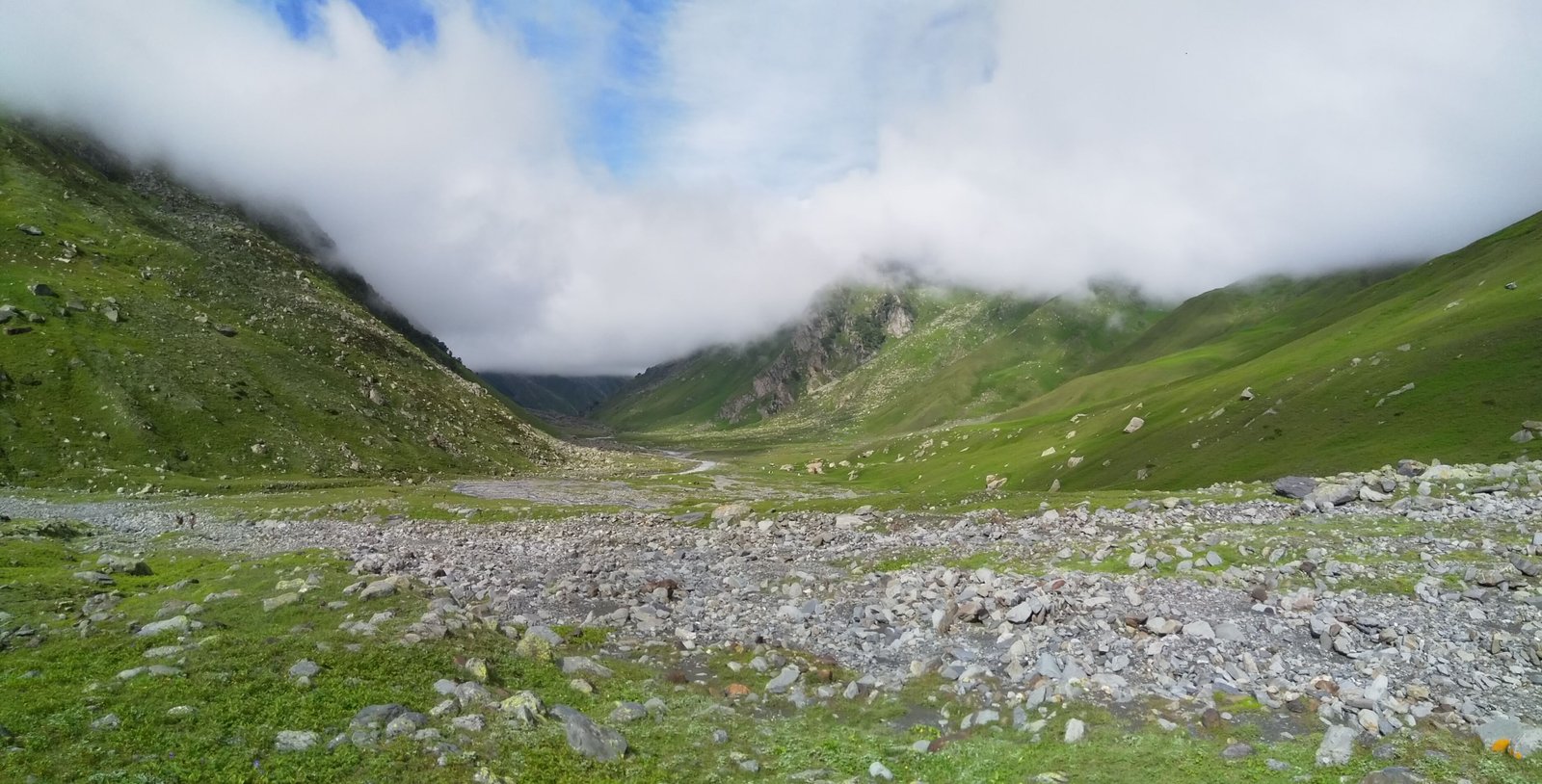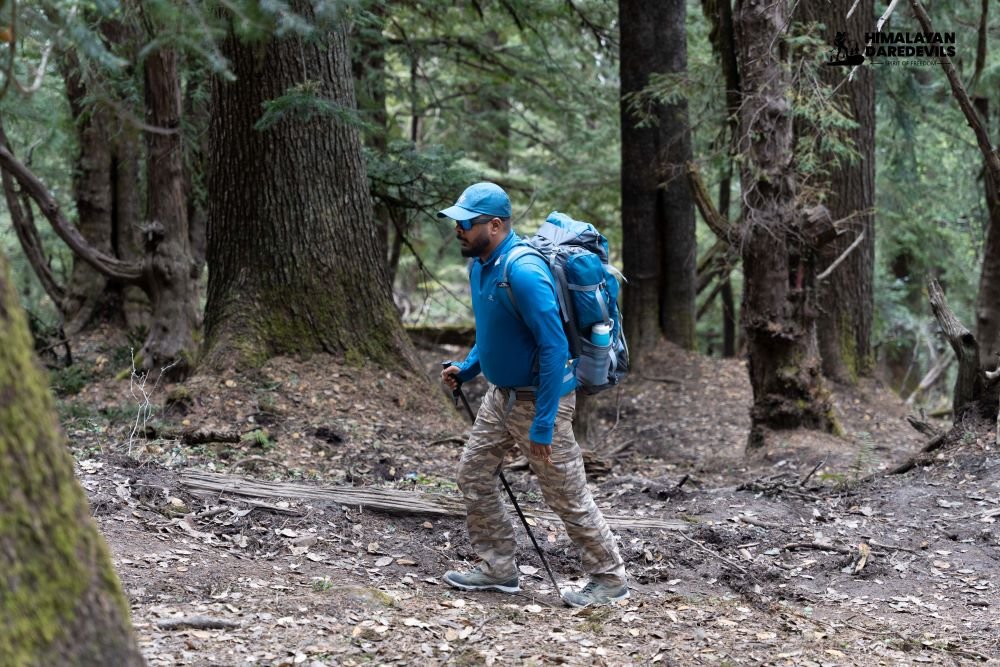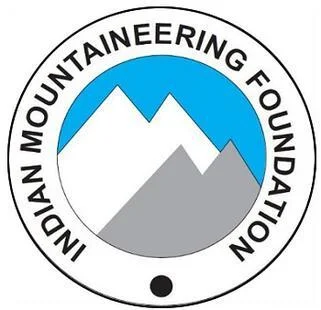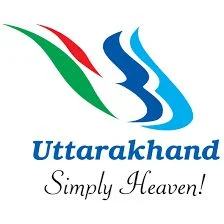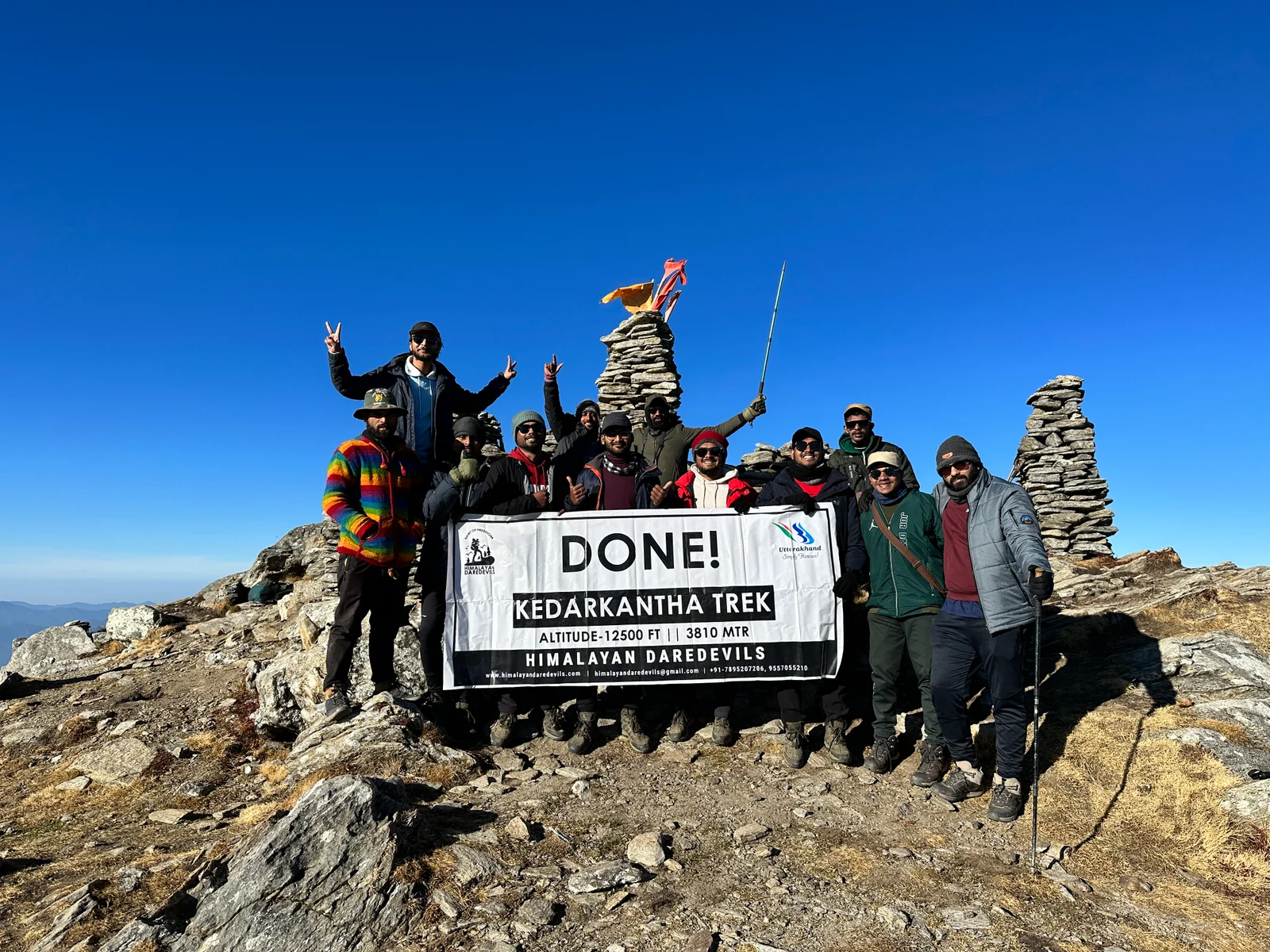Starting From
10,925
9,500.00
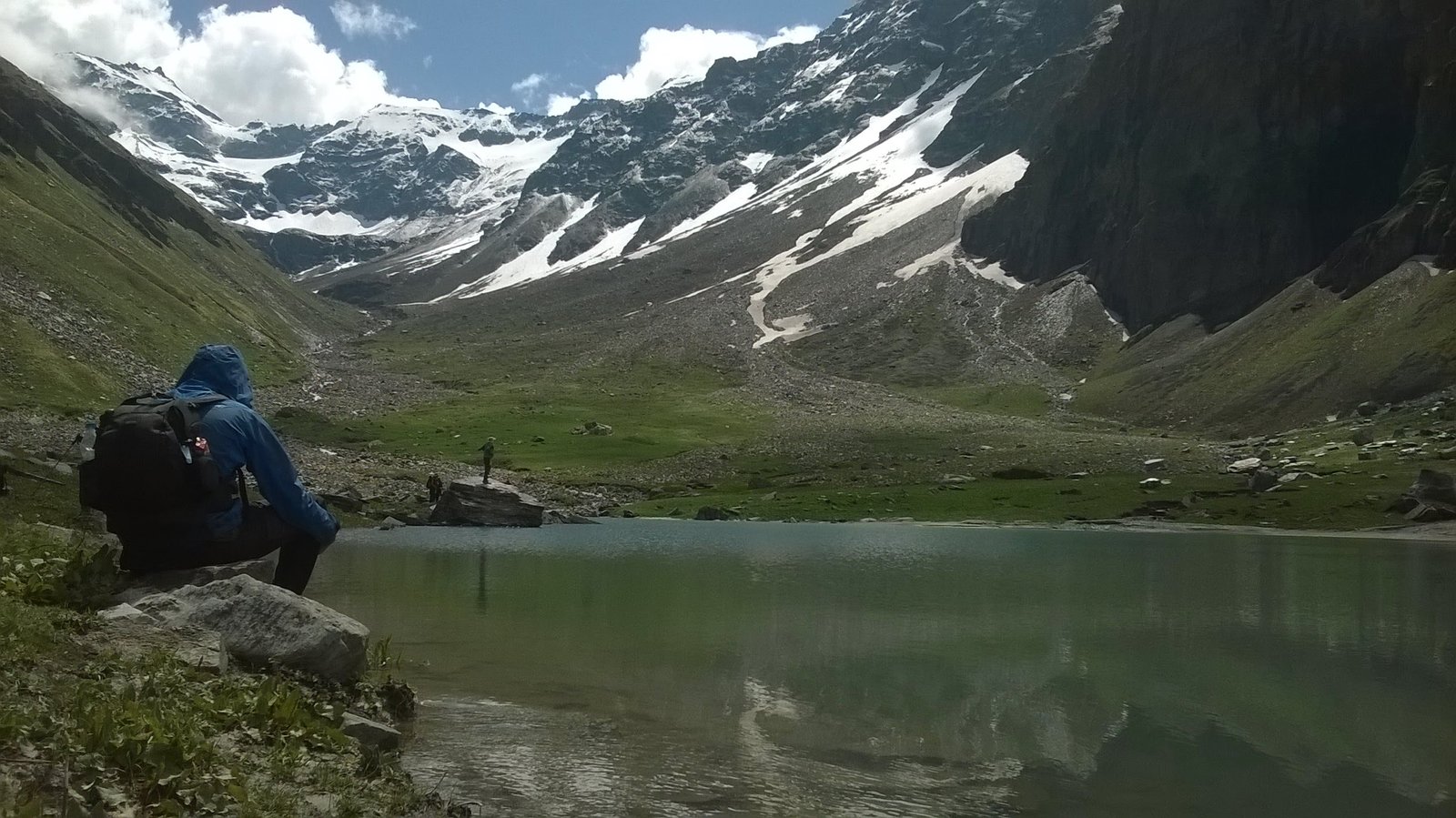
Starting From
10,925
9,500.00
Starting From
10,925
9,500.00
Saptarishi Kund Trek (288+ Reviews)
The treks starts and ends in Hanumanchatti
Dehradoon Railway Station
Jolly grant Airport
Hanumanchatti
May,June, Sep and Oct
Hanumanchatti to Hanumanchatti
Veg
Hotels and Camp
Uttarakhand
5 Days
Moderate
14500 ft
33 Km
Overview
Saptarishi Kund Trek at an altitude of 4421 meters above the sea level and it is considered as one of the most difficult treks in the Himalayas. This glacial lake is half kilo meter long, dark bluish in colourand the main source of Yamuna River. The Kund is fed by Champasar glacier and it surrounded by rocky glaciers.
The most amazing thing about the surroundings of this lake are rock strewn glaciers, Brahma Kamal’s and natural slate stones found on the banks. Go through the dense forests, meadows and high ridges which offers fascinating views of the unnamed long stretched alpine meadows and majestic Bandarpoonch peak with other snow-capped mountains.
Itinerary
Vehicles will be arranged from Dehradun Railway Station and the departure time is 6:30 am. The drive is towards Hanuman Chatti which is situated on the confluence of Yamuna and Hanuman Ganga rivers.
It is 13 km away from Yamunotri and has accommodation facilities. Reach there in 5 to 6 hours and the arrangements will be made in a hotel.
Post breakfast start the trek to Yamunotri through Banas, Phool Chatti and Jan Ki Chatti. Yamunotri at an altitude of 3293 m is one of the Char Dhams which is of great significance to Hindus.
It is the source of River Yamuna and the temple lies in a steep valley offering majestic views of Bandarpoonch peak. Before entering this temple are hot water kunds, there devotees cook rice and a rinse of the sins.
After a 13 km long trek, rest in a guest house and retire for the night.
Post breakfast leave for the destination, Saptrishi Kund. It is a glacial lake which is River Yamuna’s main source, lying high above the temple on Kalinda Parvat.
The trek is a steep one and the gradient is difficult. Cross the difficult sections and from the top of high ridges get fascinating views of the unnamed long stretched alpine meadows.
Holy Saptrishi Lake lies amid rocky glaciers and is dark bluish in colors. It is fed by the melting water of glaciers around. The beautiful thing about the surroundings of this lake are Brahma Kamal’s and natural slate stones found on the banks.
It is considered sacred because in ancient times 7 sages named Rishi Kashyap, Atri, Gautama, Viswamitra, Bharadwaj, Vasistha and Jamadagni performed penance here.
After spending some time in peace and successfully exploring the area, get back to Yamunotri and retire for the night.
Post breakfast descent to Hanuman Chatti, en route at Kharsali is a temple of Someshwar Devta lying near the river from Jan Ki Chatti. Visit it because it’s the oldest temple dedicated to Surya ‘Father of Yamuna’.
After 13 km of descending, rest in a hotel at Hanuman Chatti. The arrangements will be made there.
After having breakfast leave for Dehradun and have lunch en route.
Saptarishi Kund Trek Map
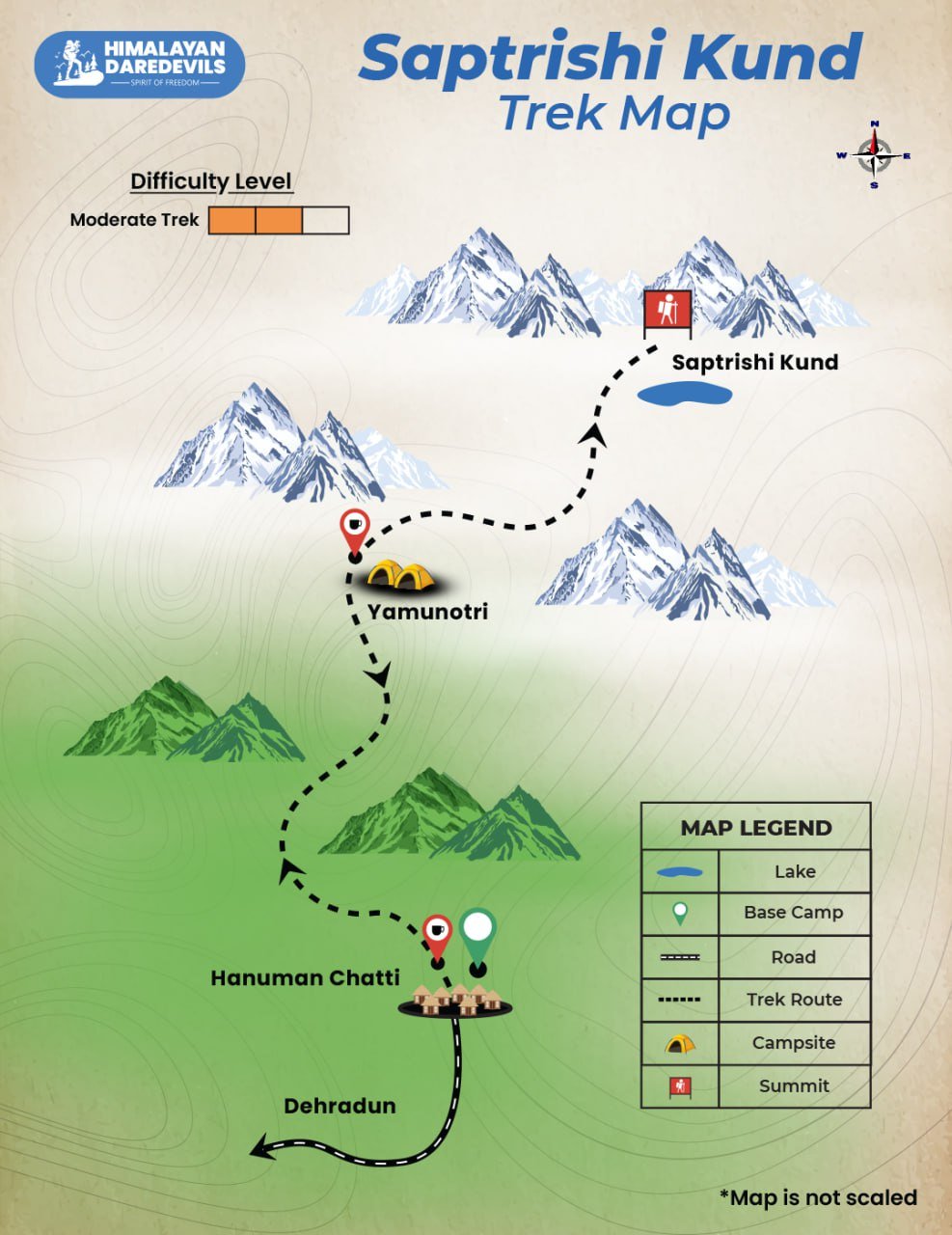
Inclusions
Exclusions
1. Meals while on trek (Veg.).
2. All necessary entry fees and permits.
3. Accommodation:- Guest house / Camping during Trek.
4. Mountaineering qualified & professional trek Leader, guide, cook, and Support staff.
5. First aid medical kits, stretcher, and oxygen cylinder.
6. Trek equipment: Sleeping bag, mattress, tent, kitchen & dining tent, toilet tent, utensils, and crampon (if required)
7. Staff Insurance.
8. Porters/mules to carry central equipment.
1. Any kind of personal expenses.
2. Food during transit.
3. Mules or porters to carry personal luggage.
4. Insurance.
5. Transport (Non Ac)
6. Any kind of emergency evacuation charges
7. 5% GST
8.Any expense incurred or loss cost by reasons beyond our control such as bad weather, natural calamities (landslides, floods), flight delays/rescheduling/ cancellations, any accidents/medical evacuations, riots/strikes/war/pandemics etc.
9. Anything not specifically mentioned under the head.
1. Meals while on trek (Veg.).
2. All necessary entry fees and permits.
3. Accommodation:- Guest house / Camping during Trek.
4. Mountaineering qualified & professional trek Leader, guide, cook, and Support staff.
5. First aid medical kits, stretcher, and oxygen cylinder.
6. Trek equipment: Sleeping bag, mattress, tent, kitchen & dining tent, toilet tent, utensils, and crampon (if required)
7. Staff Insurance.
8. Porters/mules to carry central equipment.
1. Any kind of personal expenses.
2. Food during transit.
3. Mules or porters to carry personal luggage.
4. Insurance.
5. Transport (Non Ac)
6. Any kind of emergency evacuation charges
7. 5% GST
8.Any expense incurred or loss cost by reasons beyond our control such as bad weather, natural calamities (landslides, floods), flight delays/rescheduling/ cancellations, any accidents/medical evacuations, riots/strikes/war/pandemics etc.
9. Anything not specifically mentioned under the head.
What to carry
There is an important question that the trekker who is doing trek asks, like what all things to carry while trekking. Below we have provided the details on everything you should carry; an easy way to remember is by Head to foot or foot to head. We have prepared from Head to foot.
- Head Lamps – If there are treks which you might do at night and even when camping for the night. Headlamps help a lot.
- Hats or Cap – Beanie Cap will protect you from winds and sometimes freezing temperatures for the night. Hats protect you from the sun during the day and also ensure they have a strap so the hat doesn’t blow from the wind.
- Sunglasses – if you want to carry sunglasses, you will need specific sunglasses for trekking. The glasses should protect from UV rays, fit your face perfectly so it doesn’t fall while you climb, jump, or cross an obstacle, and be according to the weather conditions of the place; the glass should be made to fit different weather conditions.
- Buff / Balaclava – You must carry this to protect your mouth or neck from extreme temperatures and keep it warm.
- T-shirt / Long sleeve shirt – you should carry at least 4 to 5 T–shirts, so if one gets wet or dirty, you can wear another. Long sleeve shirts help to protect from sun UV rays.
- Hiking / Trekking Jacket – down jackets (-5 to-10 C) or three-layer jackets.
- Thermals – at least two pairs of thermals help keep the body warm during cold weather.
- Undergarments – you can carry them according to your habitual and hygiene requirements.
- Gloves – 1 pair of gloves will keep your hand warm and nice.
- Shorts / Legging / Pants – Bring 3 to 4 warm, comfortable shorts. Leggings can be used specifically in the chilling morning and evening to keep your body warm and act as dry. You can carry some nylon blend and light and quick-drying pants. Warm covers ups like fleece-lined tracksuit pants or ski pants.
- Socks – you should at least carry 3 to 4 pairs.
- Footwear – Trekking shoes which are waterproof and have ankle support. Walking / Hiking sandals which can be used off the trek, i.e., in the morning and evening hours, basically to get your feet rest from heavy boots, sometimes used for crossing streams and rivers, it’s more comfortable and safer than crossing barefoot or wetting your boots. Sneakers (Optional) can be worn for normal driving days or used around the camp.
- Rain Wears – you can carry a raincoat, rain jacket, and pants. During long rains, the waterproof jackets start leaking, but the poncho does get work in keeping you dry, so choose accordingly. Rain covers, small waterproof to cover your backpack and a daypack for your gadgets.
- Backpack – Make sure your backpack should be comfortable, neither too big nor too small, and for a week’s trek, 60-70 litres of the backpack should be enough to hold all your belongings. Ensure your backpack has good hip & Shoulder support, and pockets should be accessible quickly.
- Daypack – All trekkers should keep in mind that a daypack is very important; this will be a great help to you while on the trek, also every single day, you won’t be carrying your backpack; therefore, for day excursions, shorter hikers, sightseeing, you can carry your stuff in it.
Compulsory Documents to Carry
These files must be submitted to the Forest Department before your trek. With none of these, you will not be permitted to trek. Original and photocopy of government photo identity card. Carry Ids like Aadhaar, voter id, etc.
How to reach
With a variety of means of transport available, this beautiful city. Find lots of beauty in every mode of traveling by road, air, or train as each route takes you through different sights. Get ready to be impressed by the mountains as you begin this marvelous trip.
By Road
From Delhi :
Distance: About 260 km.
Time: 6 to 7 hours.
Route: NH 44 should be taken; this road goes through Meerut, Muzaffarnagar, and Roorkee which is scenic.
Suggestion: You may take a cab or book a cab online rather than getting stressed out about availability.
Local Buses:
Frequency: Buses are available in the regions of Delhi, Chandigarh, and Haridwar after every hour.
Forms: AC and non-AC buses are both provided.
Booking: These can be bought online or at the bus stop
Self Drive:
Benefits: You can also check out places on your way around.
By Air
Jolly Grant Airport:
Distance from the airport to Dehradhun: It is 25 kilometers.
Air Transport Available: Major Indian metropolitan cities namely Delhi, Mumbai and Banglore have rounds of flights to this airport regularly.
Time: 1 hour starting from Delhi.
Transportation after the flight:
Alternatives: Taxis and private cabs are available outside the airport.
Time taken to travel from the airport to Dehradun: 40 to 60 minutes.
By Train
Dehradun Railway Station:
Connectivity: Trains connect it well to prime locations such as Delhi, Mumbai, and Calcutta.
Popular Trains:
Nanda Devi Express: Travel time is Nanda Devi overnight service.
Shatabdi Express: Day service; fast and comfortable.
Dehradun Express: Return options are available regularly.
From the Station:
Local Transport: Locals recommend wholesale taxis, auto-rickshaws, or local buses to the city or the trekking starting point.
Fitness and preparation guide for Saptarishi Kund Trek
We recommend jogging as the best routine to get fit for a trek. It works on the same muscles that you use while trekking — your calves, glutes and hamstrings. It helps increase your stamina day by day. It is also an easy routine that does not require any equipment or tools.
Fitness target:
To do this trek comfortably, you must be able to cover 5 km in under 35 minutes. This is the minimum fitness required for this trek.
How to achieve this fitness?
- Start jogging at least 4 days a week
- If you cannot run 5 km immediately, start with 2 km and increase to 5 km over 2-3 weeks.
- Once you’re able to run 5 km, increase your pace day by day.
- Gradually increase your pace and bring it down to 5 km in less than 35 mins.
- You must be able to run 5 km in 35 mins consistently for at least 2 weeks before the trek.
This trek requires at least 6-8 weeks of preparation. The longer, the better. So plan your trek soon and start preparing.
Cancellation policy
Life is unpredictable and we understand sometimes you have to cancel or change your trip dates and it is our endeavour to make it as easy possible for you. However, please understand we plan everything including guide fees, permits, accommodation and ration in advance. Therefore any cancellation means inconvenience and certain losses to the people involved in various stages of programme. Keeping that in mind, our cancellation charges are as below-
Cancellation prior to 30 days from start of the event: Get monetary refund with 15% of cancellation charges on trek fee.
Cancellation between 30 days and 15 days to the start of event: 50% on trek fee is non refundable and the remaining 50 % will be given as cash voucher which is valid for 1 year.
Cancellation less than 15 days to the start of event: No refund.
Please note cancellation will be only accepted by email.
Booking amount is non refundable
Note: The Himalayan Daredevils reserves the right to cancel a programme before departure in the event of logistical problems arriving due to natural calamities, strikes, wars on any other circumstances that makes the event inadvisable. In this case, 50% on trek fee is non refundable and the remaining 50 % will be given as cash voucher which is valid for 1 year.
Itinerary changes & trip delays:
We plan itineraries based on the information at the time of planning and in rare circumstances, there are subject to change. In the event that the itinerary is changes or delayed due to unforeseen circumstances such as bad weather conditions, transportation delays, government intervention, landslides etc. We will always aim to give you the best experience possible. However The Himalayan Daredevils are not be held responsible for the cost of delay or changes.
Why Choose Us
